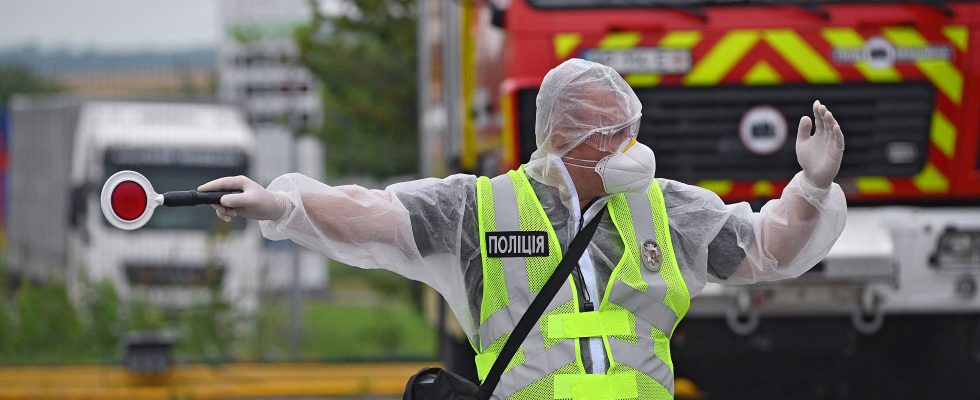Caulk doors and windows. Remove clothing that has been in contact with air. Clean the skin with water. Wait for the instructions given on the radio to go out or take iodine. For months, the Ukrainian authorities have regularly recalled the watchwords in the event of an attack or nuclear strikes. But one more step was taken on June 29. Kiev has launched the first large-scale drills for civil servants, emergency services, police and hospitals in the regions of Kherson, Mykolaiv, Dnipro and Zaporizhia, near the military-occupied power plant of the same name Russian since March 2022.
For the past few days, the Ukrainian authorities have been alerting the population. “Our intelligence services have obtained information that Russia is considering the scenario of a terrorist attack at the Zaporizhia power plant,” Volodymyr Zelensky warned on June 22.
For the head of Ukrainian military intelligence, Kyrylo Budanov, Moscow approved the plan to trap the plant. According to him, four of the six reactors and the cooling pond have been mined, and the occupants will set off the explosives depending on the situation on the battlefield. Already, the Russians are reducing their presence in the plant and in the town of Enerhodar. Three high-ranking Rosatom officials – the plant’s chief inspector, the head of the legal department and the deputy in charge of supplies – left the premises and Ukrainian employees who had signed contracts with the Russian nuclear agency been invited to leave for Crimea “before July 5”.
Concrete containers
Only 2,500 employees remained to monitor the six reactors – compared to 11,500 in peacetime. For more than a year, Russian forces have turned the place into a military base by bringing heavy weapons into the facility. Former plant engineers told L’Express that it would be difficult to damage the reactors, which are surrounded by steel and concrete vaults designed to withstand the fall of a plane. But the small cooling pond – which is believed to have been mined, along with 174 dry storage containers of spent nuclear fuel stored in concrete blocks outside the plant – is more vulnerable.
“Even if only one of these containers is damaged, it would create a very serious radioactive accident, a kind of dirty bomb,” says Oleh Doudar, a former manager of the plant. The United States is “monitoring the situation closely”, but said it “sees no indication that the threat is imminent”. The IAEA also said days earlier that its on-site inspectors had not seen any new mines laid.
Howling sirens
But with the experience of the catastrophic management of Chernobyl by the Soviet authorities, the Ukrainians know that when it comes to nuclear power, you have to be ready for anything. Since June 23, decision-making centers are deployed in several regions to respond to a potential attack on the plant. In the midst of a counter-offensive, even a “minor” accident could disrupt the Ukrainian army. “That’s not what will stop me”, had however swept the head of the Ukrainian army Valeri Zaloujny in the washington postJune 30.
The day before, specific sirens warning of a nuclear attack sounded in several regions of Ukraine during the exercises. Preserving the population requires a titanic task of coordination, involving the authorities at national, regional and local levels, the ministries of Health and the Interior, of civil protection, of the police and of the army. Roadblocks and assembly points with officials in protective suits were improvised to prepare the evacuation within a radius of 30 to 50 kilometers. In the event of an accident, up to 500,000 people could be affected depending on the direction of the wind. If it occurs on a day, the highest rate of radiation will persist for about 24 hours. The population will have to hide inside and wait for instructions.
“For us, these exercises were mainly theoretical because we are far away”, explains by telephone Artem Vahin, representative of the regional civil protection of Mykolaiv, a region located about 150 km from the plant. “Actually, it all depends on the direction of the wind.” Already, the organization has planned decontamination points and evacuation teams. “We can’t be ready for everything, but we have a plan, explains the rescuer. I just hope we never have to use it.”
